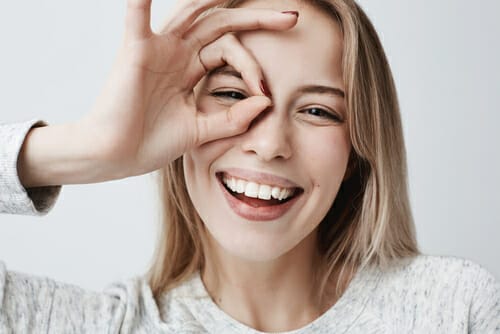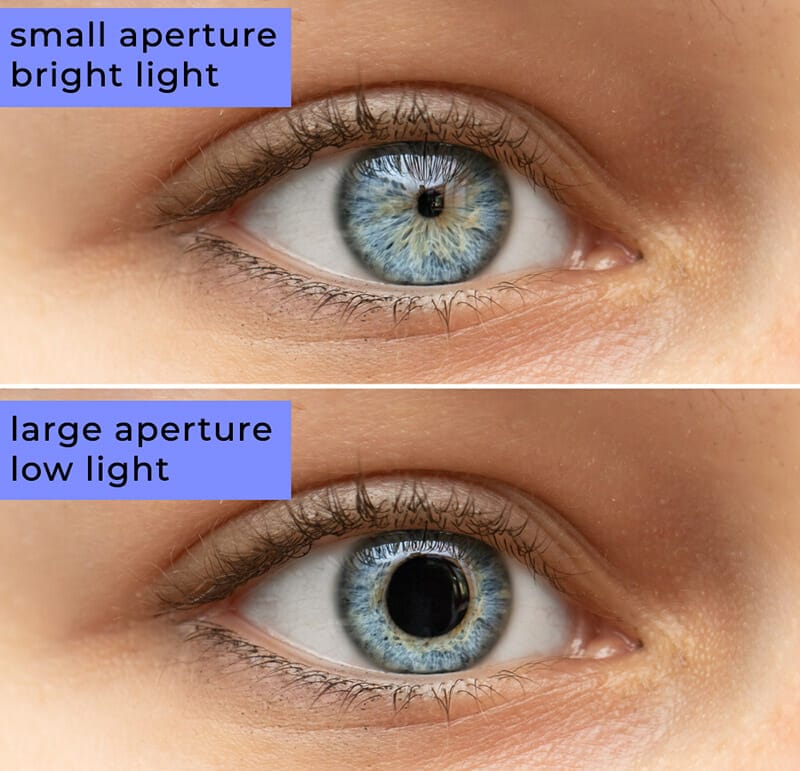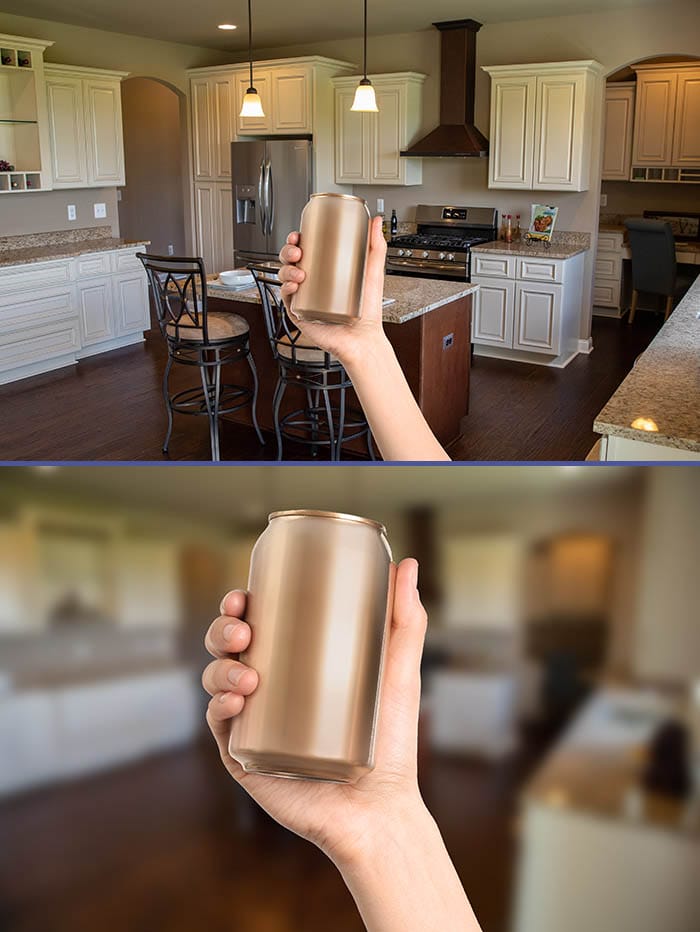The one thing I was taught in the early days of art school was to treat your eye like a camera – ironically called ‘eye photography’. You might think it’s where we came up with the name iPhotography, but unfortunately not.
Nevertheless, whatever you want to call it the premise of treating your eye like a camera is an incredible way to understand many basic photography principles.

Your eye does what no camera can do effectively, it regulates light to perfectly retain dynamic range. If you think about how your pupils react to light, you’ll know how to change the aperture of your camera accordingly.
When it’s bright, you squint = when it’s bright close the aperture of the camera (to a high F/number).
When it’s dark, you peer = when it’s dark open up the aperture to let in more light. (to a low F/number).
Does this make sense? Let’s show you another principle of ‘eye photography’.

Building on from our last point about understanding aperture, our eye’s can also help us understand depth of field.
For example, get hold of a tin from the kitchen and place it 5 feet away from you; it’ll be sharp to your eyes and everything else will be too. Now grab that tin and bring it 6 inches from your face, it’s still in focus, but the background won’t be.
You’ll have to have a quick eye to notice this though, as soon as you look at the background it’ll be back in focus!
Remember, an object close to the camera will throw the background out of focus (shallow depth of field). If it’s closer to the background though, then more of the surroundings will be in focus too.
The extra special thing is that your eye can do this without the pupil changing aperture size.

Motion is one area where the camera has one advantage over your eye photography. Our eyes are bound to track relative motion, whereas a camera can play with the concept of time, slowing it down for effect.
But still to understand shutter speed our eyes can be extremely helpful. Imagine seeing a race car drive by us quickly. To see all the detail on its exterior our heads will turn and track the motion, and your camera must do the same too.
This is the basic principle of panning – in order to keep the subject in focus you have to pan in the direction of the motion at a relative speed.
If we treat our eyes like a camera then you should know zooming is a luxury reserved only for your camera. Art school will teach a photographer never to zoom, instead move. Understandably there are times when zooming in is the only way to get your shot, but it should be the last resort.
Try to move closer to your subject, change angles, tilt your camera or rethink the whole shot instead of relying on your lens. Why though?
Well depending upon how you view photography you may consider that a zoomed in photo a false view of a subject. That’s not the shot that your eye originally saw, it is a fictional viewpoint created by your focal length.
You’ll notice that some camera models, such as Fuji X series, feature cameras with 23mm fixed focal lengths, which is reportedly the same view as our eye.
If you aren’t this precious about the original composition of that your eye, mind or heart saw then ignore what we’re saying. Otherwise, it’s a good way to challenge your compositional skills if you don’t rely on a zoom and stick with one focal length.

In the end it may seem obvious to some, but for the beginner photographer, these are powerful mechanisms to help understand how to treat your camera in certain conditions and how it will work given a situation.
Being conscious of how your eye and camera work in coordination can help you pre-program your mind to respond with the right camera settings instinctively to low light, high action and objects in the distance for example.
If you’ve thought of other ways your eye is like a camera then let us know. Get in touch through the iPhotography website, gallery or over our social channels.
Popular memory cards for photography – what’s the best SD card for your digital camera? Choose the right capacity and class speed in our guide
Discover the BEST way on how to clean a camera sensor using swaps, rocket blowers and pencil brushes to give your shots a dust-free finish!
Capture the magic of the night with our beginner’s guide to night photography. Learn tips and techniques for stunning results.
Learn the basics of photography – fast – with our FREE 60-Second Photographer online course. Each class is short and sharp with simple, actionable steps that give you immediate results.
x 30 lessons

© iPhotography™
Become a confident and competent photographer in less than 30 minutes!
Before you leave, make sure you’ve secured your FREE online photography course (worth £29.99)
Each class is just 60-seconds or less making it the fastest and easiest way to learn photography!